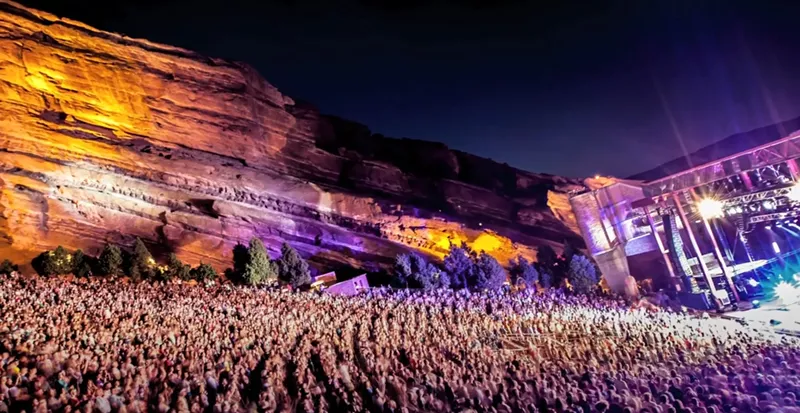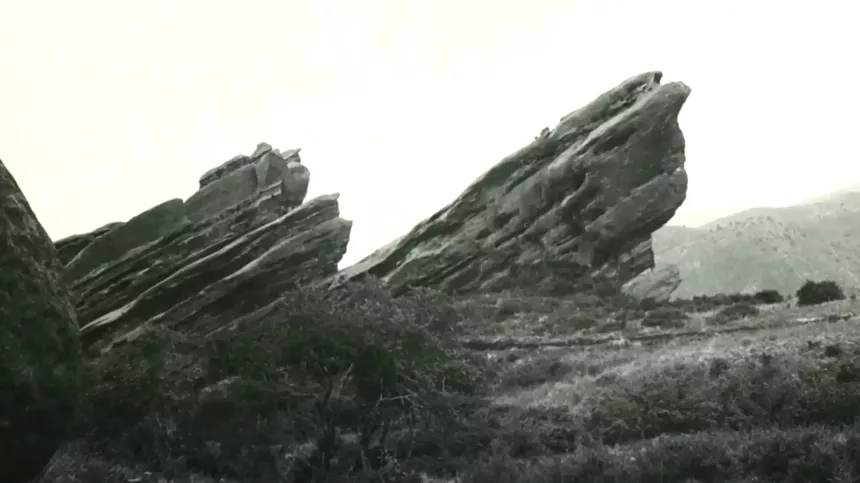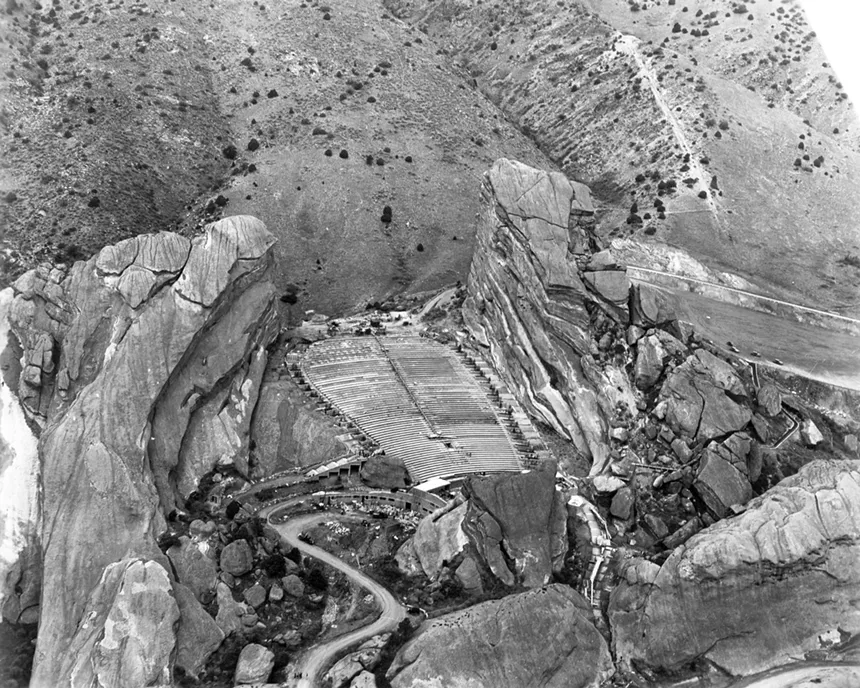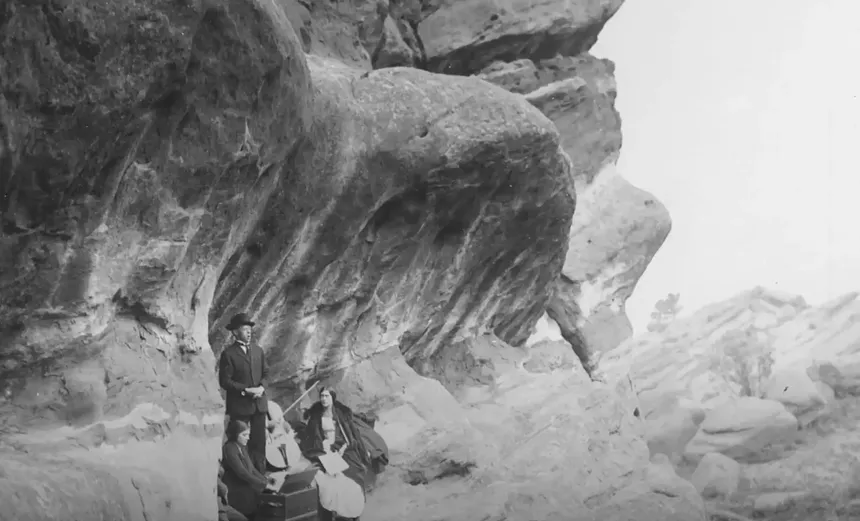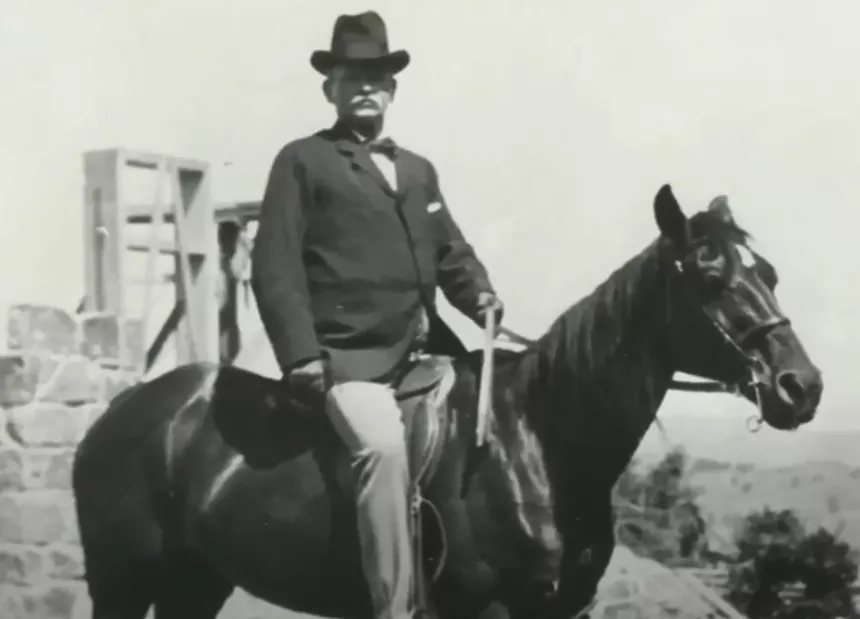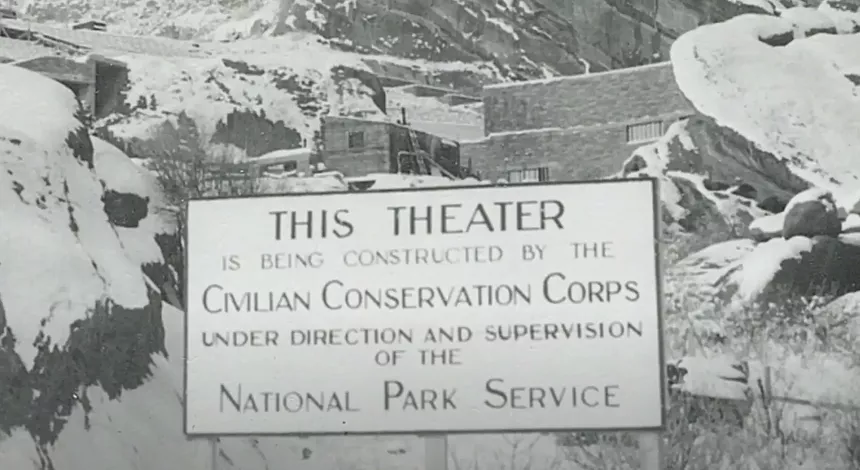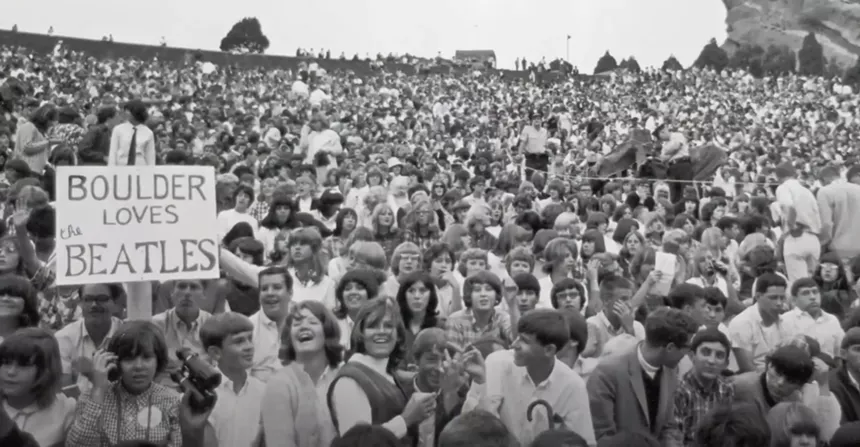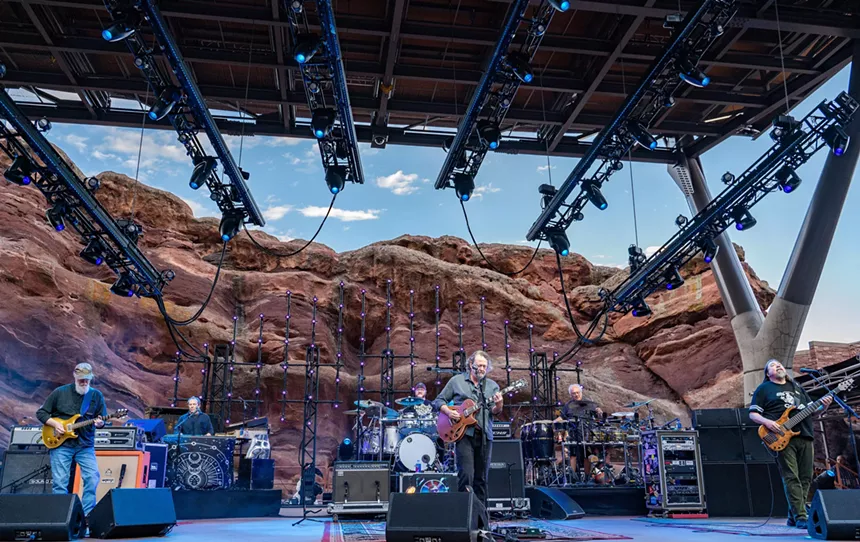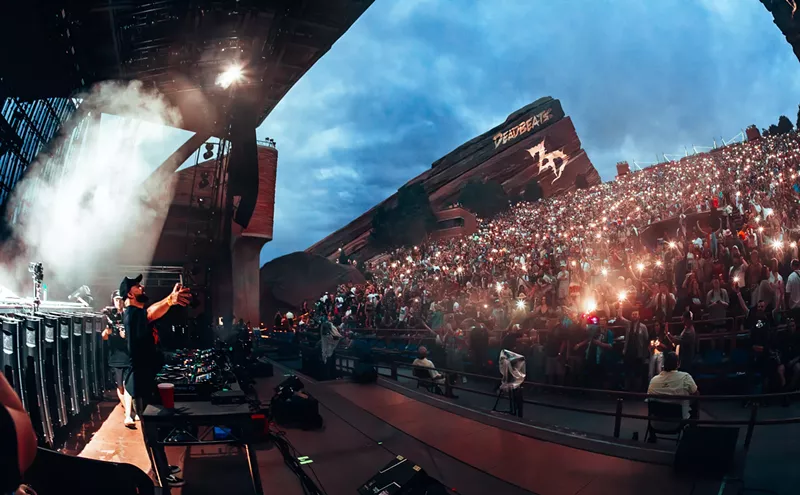The amphitheater, which Billboard named the most-attended outdoor venue in 2024, is also a must-see for visitors, and a concert here is a rite of passage for both natives and transplants (especially when you can say you survived a windy winter show — you never know what the weather will be like). It's part of the fabric of our statewide community — and yet there are still things most folks don't know about Red Rocks.
While we have laid out the history of Red Rocks, here are some key facts for you to share next time you're in line for a vodka lemonade on those storied, ruddy Colorado steps:
Fun Facts About Red Rocks
The Utes Were Here FirstFor centuries leading up to the American expansion in the mid-nineteenth century, Red Rocks was a home to the Ute tribe, and evidence of their presence is all over the surrounding area. Sadly, over the many iterations of construction and development, any uncovered artifacts were deemed unimportant at the time and subsequently lost. It’s telling that we know more about the dinosaurs that lived in the area than we do the American Indians, who likely utilized the natural acoustics for their own ceremonies.
Fossils Are Embedded in the Rocks
Speaking of dinosaurs, a plesiosaur lived at Red Rocks. Or it died there, anyway, as the forty-foot fossil it left behind proves. But isn’t it nicer to envision a big ol’ long-necked aquatic dinosaur lounging back against one of the rocks? Listening to Phish, no doubt. In fact, there are also fossils from the Jurassic Period — 160 million years ago — that include a Mososaurus and flying reptiles from that age. When Earth's plates pushed up the Rocky Mountains more than 65 million years ago, they also erected the umber rocks we find there today.
The First Show Was in 1906
More than 116 years ago, the first band to play the legendary venue was Pietro Satriano and his 25-piece brass ensemble at the grand-opening celebration. The idea to use the majestic space for music came from the former owner of Cosmopolitan magazine, John Brisben Walker, who won and lost several fortunes over his lifetime. Walker also donated a sizable amount of land in Denver to the Jesuits, who would use it for Regis University.
It Was Once Named "Garden of the Titans"
In 1870, six years before Colorado became a state, Red Rocks christened the Garden of Angels by Jefferson County judge Martin Van Buren Luther. It changed hands between a couple owners before it was bought by Walker, who renamed it the Garden of the Titans, almost assuredly a marketing ploy to compete with the already established Garden of the Gods in Colorado Springs. But not all of Walker’s ideas for attracting visitors were stellar: In 1912 he proposed, among other wacky plans, to carve one of the great natural formations into a full-scale replica of the Sphinx. In 1941, it opened as Red Rocks Amphitheatre.
It Was Probably Unethically (If Not Illegally) Seized
In the early 1920s, the City of Denver was using — some say abusing — eminent domain to take over vast areas of land, partly to compete with Colorado Springs in the battle for a growing car-related tourism industry. While there’s no deed of sale or record of any $50K transaction (the amount cited by most historical sources) in the Jefferson County records, there was legal maneuvering going on, and it’s likely that sum was paid to remunerate the owners for the condemned and commandeered parcel of land that became part of the Denver Mountain Parks system.
The Amphitheater Came Courtesy of the New Deal
When Denver “bought” Red Rocks in 1927, the city had plans for redevelopment, but that went south very quickly when the stock market crash of 1929 took the financial winds out of American sails. It would sit unused until 1936, when Denver architect Burnham Hoyt finished the design for the outdoor space, modeled after the ancient Taormina in Sicily. It took five years of work through both the Civilian Conservation Corps (CCC) and Works Progress Administration (both Depression-era public work relief programs under President Franklin D. Roosevelt’s recovery plan) before the venue could be put to use, and more than seven years after that for the construction to be completed.
The Rocks Have Names
Some of Walker’s old names for the rocks have been lost to the ages, but many remain: The Seat of Pluto is only one of several that still bear the old Roman-style titles that he bestowed on them. The main three are fairly well known: Creation Rock, Ship Rock and, of course, Stage Rock. You can still see the now-unused steps on Ship Rock if you look carefully — a path with just a metal rail that was supposed to mimic the bow of the doomed Titanic. Liability law was not a thing back in the day.
First “Rock” Show? The Beatles.
And get this: It didn’t sell out. It was, in fact, the only show in the Beatles’ legendary 1964 American tour that didn't. But the August 26 concert did break the box-office record for an open-air venue at that time. The experience was notable for a couple of other reasons, too: The Fab Four were the first band of many to require oxygen tanks on stage because of the elevation. And the group was also the first big security risk, as it received a number of death threats, and the idea of snipers atop the rocks was a serious concern.
There's the Ghost of a Hatchet Lady
There are a lot of superstitions regarding Red Rocks, from phantom Ute drums in the distance to mysterious music rising from the ethereal past. But the most enduring legend is that of the Hatchet Lady, who's usually seen naked, either on horseback or emerging from one of the small shallow caves dotting the landscape. She's often holding a bloody hatchet (thus the name), and she appears either with or without her head, threatening visitors who in some way are not respecting the natural cathedral, in her spectral opinion. It's her violence, or so it's said, that colored the rocks red in the first place.
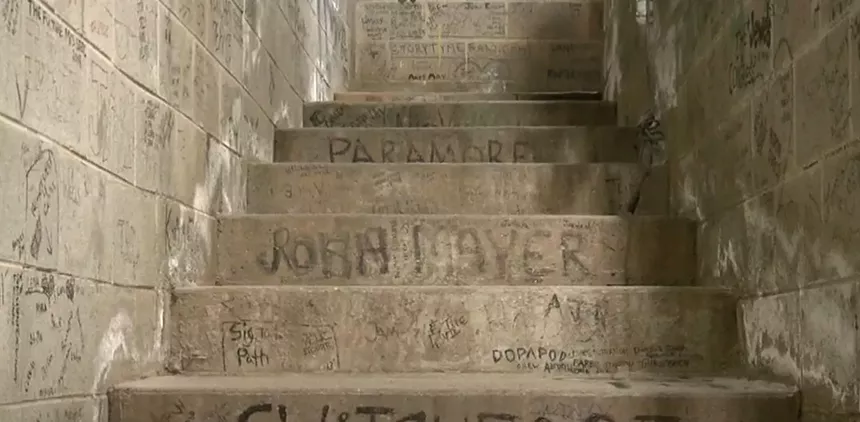
It's what your high school bathroom would look like if you matriculated with nothing but rock stars.
It’s probably one of the worst-kept secrets of Red Rocks — that there’s a service tunnel backstage, and pop-culture famous folks from the last fifty years-plus have taken to writing on the walls, sometimes just signing their names, other times leaving messages, even responding to the messages of the stars that came before them, marker in hand.
Bans Have Plagued Red Rocks Over the Years
For all the famed acts that have graced the venue over the years, there have been more than a few events that shut down business as usual, at least for a while. It began in 1964, when fans threw beer cans on the stage at a Peter, Paul and Mary show (and this wasn’t the first time — they’d done the same at a 1962 Ray Charles performance). For a short time, alcohol sales were banned, until cooler (and more profit-driven) heads prevailed. And while Aretha Franklin wasn't a rock-and-roll artist, her fans caused a ban on all rock shows. In 1968, she refused to perform because of contract issues, causing fans to rush the stage and destroy a piano. There were no rock shows at Red Rocks throughout 1969.
But the most prolonged ban came about in 1971, after a Jethro Tull show in June. The ruckus began before the band even arrived at the venue: Opening act Livingston Taylor (James Taylor’s younger brother) was getting booed off stage, while a large group of un-ticketed fans tried to rush the barricades. People were arrested, there were injuries, and tear gas was thrown, which continued to waft throughout the venue even while Jethro Tull put on what show it could. The result of the fracas was that there would be no rock shows allowed at Red Rocks between then and the summer of 1976. Until then, Red Rocks would only be played by the likes of John Denver and the Carpenters.
Since that time, only one ban has taken place. It was because of Phish in 1996, when fans annoyed the crap out of Morrison residents with rampant camping and unending partying. The band and its fans were persona non grata until 2009.
Red Rocks Used to Be Up for Awards; Now One Is Named After It
Red Rocks is the favorite venue of many in the music industry, creating an impossible standard to meet for all other outdoor venues. The music-industry trade publication Pollstar gave Red Rocks its Best Small Outdoor Concert Venue award eleven times before deciding to just name the award after it. Other venues now vie for the Red Rocks Award, taking a respectful second behind the king of them all.

Opiuo programmed the lighting and video for last year's Red Rocks show.
Brittany Teuber (@brizzzzzle)
It's a widespread myth you often hear from wooks wrapped in pashmina scarves and wearing pin-covered hats: The bass from EDM music is eroding the venue's majestic rocks. This is decidedly not true. The rocks actually absorb the sound, which is what makes for Red Rocks' unparalleled acoustics. After the venue's first solo performance, in 1911, Scottish opera singer Mary Garden declared: "Never in any opera house the world over have I found more perfect acoustic properties than those under Creation Rock in the natural auditorium at Mount Morrison.”
There Have Been Reported UFO Sightings
On June 5, 2024, after an All Time Low show, several workers at Red Rocks spotted a mysterious aircraft above the Hogback Ridge. One of the employees, Michael Lehmann, filed a report with the National UFO Reporting Center, estimating the sighting lasted about thirty seconds before the vehicle moved 5-to-10 mph east and then "disappeared into thin air." The aircraft was "several hundred yards long" and a "dark metallic" color with "three rows of windows and lights," according to the report.
Why no photos or video of the event? "We're loading a semi, it's dangerous," Lehmann told us. "Our hands are full, and it happened so quickly. We really didn't know what we were looking for. It was maybe thirty, forty seconds..."
Widespread Panic Has Played Red Rocks the Most
The Athens, Georgia, southern-rock jam band Widespread Panic is responsible for playing the most shows at Red Rocks, with more than 70 shows at the legendary venue — the majority sold out. The band has performed there since 1991, when it opened for Blues Traveler, and is known for its three-night runs that fill the venue lots with fans waiting hours before the show starts. Last year, Widespread had a special treat before heading to its annual Red Rocks affair: The band opened for Rolling Stones at Empower Field in an epic performance that introduced stunned Stones fans to the wet-and-wild "Chilly Water."
Widespread will be back on the Rocks this summer from June 27-29.
Read more about the history of Red Rocks Amphitheatre.

